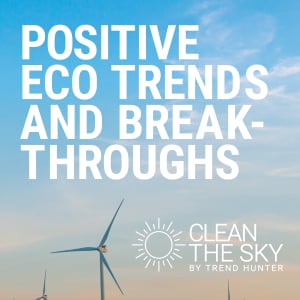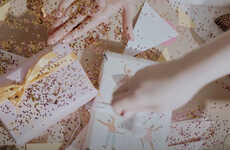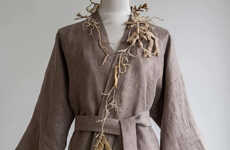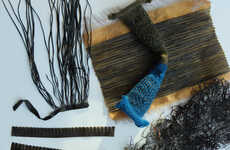
Elissa Brunato Boasts the Bio Iridescent Sequin as an Alternative
References: elissabrunato & dezeen
Fashion designers and companies have been putting emphasis on mindful and demand-based production, as well as reliable sustainable alternatives to materials — these eco-friendly sequins are a great example of the movement.
Overseen by Elissa Brunato, the project realizes Bio Iridescent Sequin made from the cellulose extract from trees. The material is available in abundance in nature as it is one of the most common polymers on Earth. The eco-friendly sequins can be made within a day in a laboratory setting, while the cellulose itself needs time to grow — it can "take anything from a couple of weeks to a number of years." Each sequin uses very little cellulose. The crystalline form of the ingredient allows for it to react with light in a shimmering manner.
Overseen by Elissa Brunato, the project realizes Bio Iridescent Sequin made from the cellulose extract from trees. The material is available in abundance in nature as it is one of the most common polymers on Earth. The eco-friendly sequins can be made within a day in a laboratory setting, while the cellulose itself needs time to grow — it can "take anything from a couple of weeks to a number of years." Each sequin uses very little cellulose. The crystalline form of the ingredient allows for it to react with light in a shimmering manner.
Trend Themes
1. Demand-based Production - Disruptive innovation opportunity: Develop technology that enables on-demand, customized production to reduce waste and meet consumer preferences.
2. Sustainable Materials - Disruptive innovation opportunity: Explore alternative materials that are sustainable, abundant, and have minimal impact on the environment.
3. Bio Iridescent Products - Disruptive innovation opportunity: Create innovative products using bio-iridescent materials, leveraging their unique properties to enhance aesthetics and functionality.
Industry Implications
1. Fashion - Disruptive innovation opportunity: Integrate sustainable materials and demand-based production methods to transform the fashion industry into a more eco-friendly and customer-centric sector.
2. Textile Manufacturing - Disruptive innovation opportunity: Develop advanced manufacturing processes that efficiently utilize sustainable materials in textile production, minimizing waste and environmental impact.
3. Bioengineering - Disruptive innovation opportunity: Apply bioengineering techniques to explore and develop new bio-iridescent materials for various industries, opening up possibilities for sustainable and visually appealing products.
6.3
Score
Popularity
Activity
Freshness























